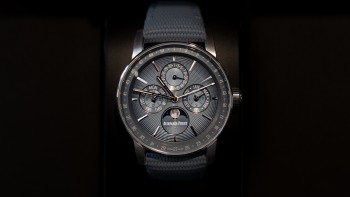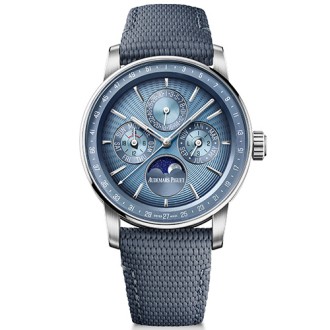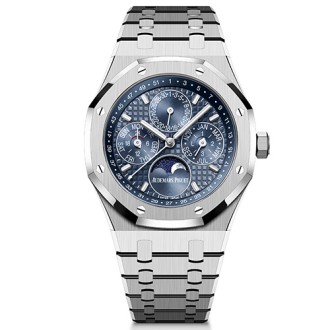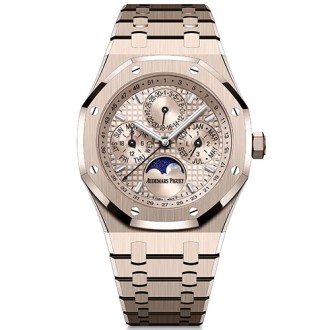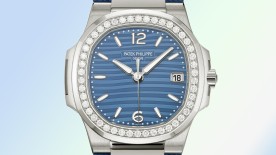Collectors know it well (and equip themselves accordingly with watch winders): it is best to avoid letting a watch with a perpetual calendar (QP for short) stop. Hours, days, dates, weeks, months, years, moon phases—its mechanics orchestrate the Gregorian calendar until 2100. That year, an exception—non-leap year—will require a manual correction on February 29, which does not exist in the calendar, to move to March 1. However, in case of prolonged stoppage due to lack of winding, the perpetual calendar gets out of sync, requiring sometimes tedious adjustments with dedicated correctors and styluses. For this reason, the simplicity and intuitiveness of QP settings remain a key area of research for watchmakers.
Audemars Piguet takes a step forward
In this field, Audemars Piguet is making a revolution in its perpetual calendar models with the caliber 7138. This replaces the caliber 5135, launched in 2019, which featured lateral correctors for date indication, moon phase, month, leap year, day, and week. The "all-at-the-crown" approach of the new caliber 7138 changes everything!
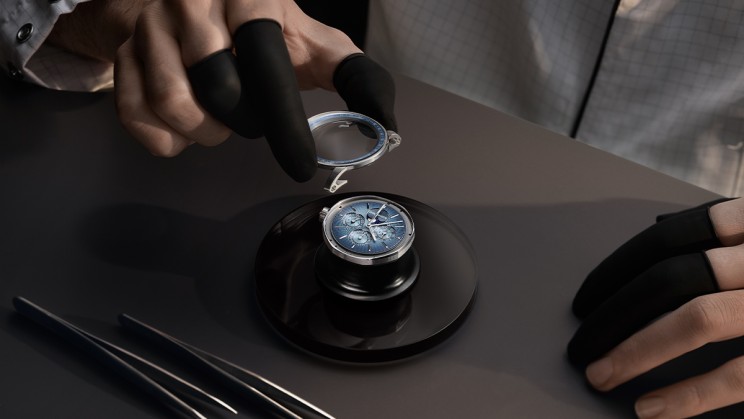
The result of five years of research and development, this movement, developed by the complication genius Giulio Papi and his team within the manufacture, builds on patented innovations from the RD#2 model (learn more about the Royal Oak RD#2).
This new caliber 7138 powers three new perpetual calendar models—a Code 11.59 in white gold with a celestial blue smoked dial, and two 41mm Royal Oak models, one in Sand Gold and the other in steel—all with unprecedented ease of use.
To mark its 150th anniversary, these three models are also launched in a limited edition of 150 pieces. The vintage "Audemars Piguet" signature, inspired by historical archives, as well as commemorative engravings on the case back, distinguish them.
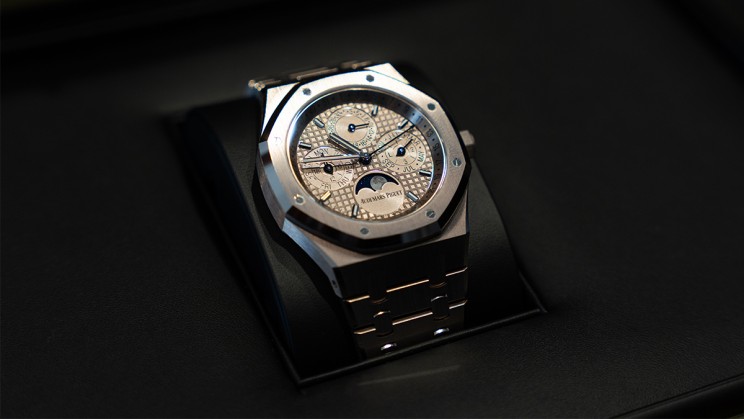
Complexity at the service of simplicity
The uniqueness of the caliber 7138? Its ingenious "all-at-the-crown" correction system. This component, easily operated by the watch owner without tools, allows for all settings in just three positions. The subtlety lies in position 2, which behaves differently depending on whether the crown "ascends" from position 1 or "descends" from position 3. "Imagine an elevator stopping on the second floor with two doors," explains a brand representative (whom we warmly thank for the clear explanation). "Depending on whether the elevator comes from above or below, a different door opens on the landing." Logical! Additionally, still in this ingenious position 2, the crown adjusts different parameters depending on whether it is turned clockwise or counterclockwise.
See the video of the movement in action
Acting as the Deus ex Machina is a complex gear wheel, "pebble-shaped," as further explained by our expert source, combined with a traveling pinion. The sophisticated mechanics of the caliber 7138 are protected by five patents. The result: a perpetual calendar at your fingertips, easy to handle, with no risk of error or damage during adjustments. For added security, a "no-correction zone" function appears in red between 9 PM and 3 AM, a period during which adjustments are not recommended.
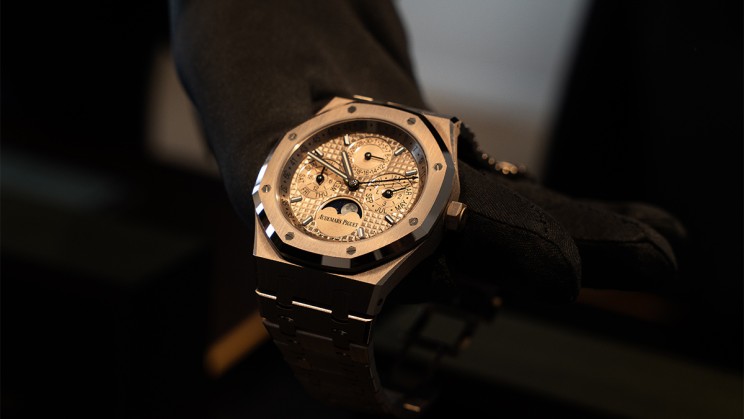
An innovation rooted in Audemars Piguet’s history
Audemars Piguet has maintained a privileged relationship with the perpetual calendar for over a century. In 1899, the manufacture introduced the ultra-complicated movement of the Universelle pocket watch, featuring 19 complications, including a perpetual calendar. In 1955, the brand launched the first wristwatch with leap year indication. Then, in 1978, at the height of the quartz crisis, it surprised the watchmaking world with the caliber 2120/2800, an ultra-thin automatic perpetual calendar movement. This technical feat helped revive interest in traditional complications, a specialization Audemars Piguet has continued to develop over the years. The manufacture went on to modernize the skeletonized chronograph (1980), the first automatic tourbillon (1986), the minute repeater (1992), and the Grande Complication (1996).
The new caliber 7138 continues this tradition in the most elegant way: by putting mechanical genius at the service of simplicity—and, above all, its users.
